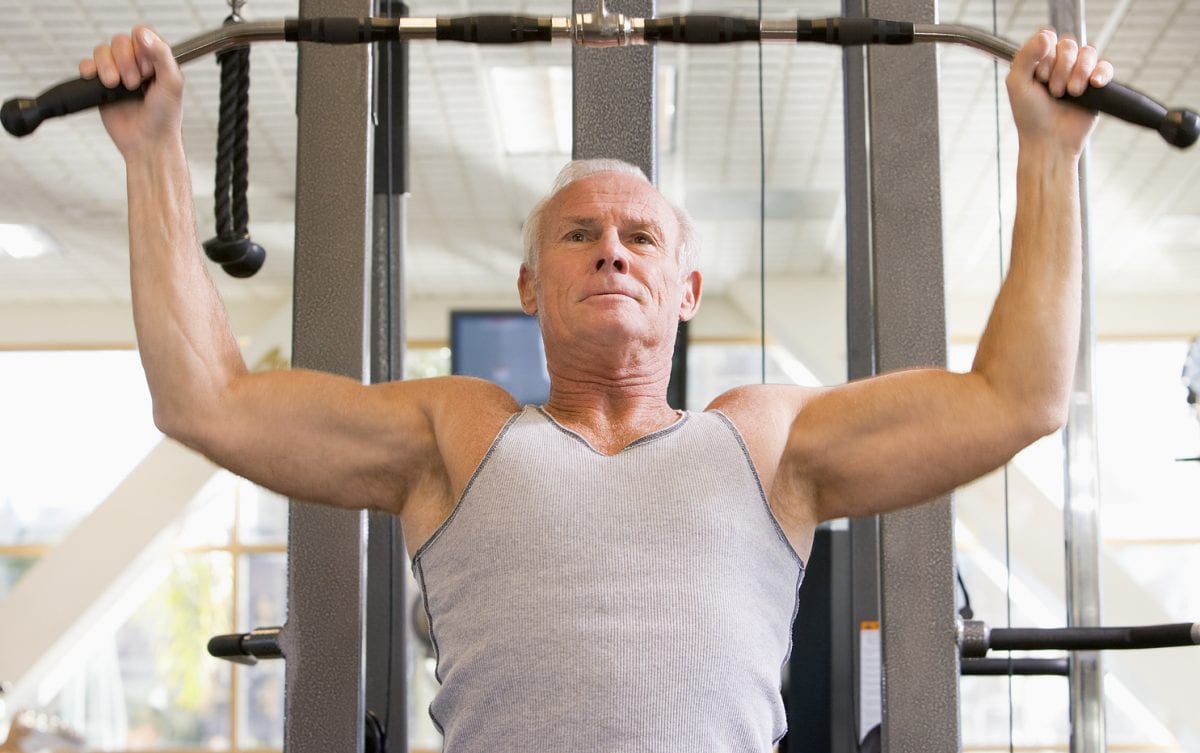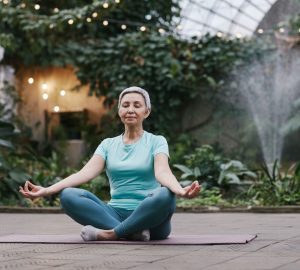We all pretty much understand the importance of exercise in our lives and how it improves men’s health – and even continuing it right through in our later years as we get older. People more often than not know that they need to participate in regular aerobic exercise such as walking or jogging or swimming to help strengthen their lungs and heart, to maintain their health and vitality and even tone their bodies through strength training over 50.
But many ignore strength training (or resistance training) activity as something reserved only for the ‘younger crowd’. There may be certain reasons for this:
- There certainly can be a difference in motivation between an older trainee and a younger one. The younger athlete can set higher goals for himself and chase after them without much fear or hesitation. The older person though has a better understanding of his body’s limitations, and therefore has more realistic expectations and goals.
- As we grow older we also lose flexibility, mainly due to disuse of a number of muscles, so being able to execute resistance training type exercises either with weights or body weight training could be difficult.
- Another reason is time. Usually because of family and work obligations, older men do not have as much time to devote to physical exercise.
There could many other reasons, however the facts are simply that resistance or strength training is the only type of exercise that actually substantially slows – and even reverses – the physical consequences of ageing – decline in muscle mass, bone density and strength.
There is Good Reason to follow a Strength Training Programme
So much so in fact that the American College of Sports Medicine (ACSM -acsm.org) has now published fitness guidelines specifically for those over 50. The advice is quoted as: “perform such exercises 2 to 3 times a week to condition all of the major muscle groups — arms, legs, shoulders, and trunk. The goal is to lift a weight that’s heavy enough to achieve 10 to 15 repetitions per session before the muscles become fatigued”
There are good reasons for this. Resistance training (either with free weights or machines, or your own body weight, or exercise bands or even in water) offers far more of a challenge to muscles than cardiovascular training with fewer movements. The muscle tissues are ‘torn’ and have to re-heal themselves with new tissue, thus making them stronger. Therefore muscle atrophy is halted, and even reversed if strength training exercises are carried out regularly enough. A real bonus for men’s health.
Of course aerobic activity and strength training are both important for health, so the ACSM recommends that able adults do both on a regular basis. They say: “20 to 60 minutes of aerobic activity is advised 3 to 5 days a week and weight training should be done for 20 to 30 minutes 2 to 3 times a week. The guidelines also suggest that people perform stretching exercises – which increase the range of motion – or amount of movement, of joints – a minimum of 2 to 3 times a week”
In fact, strength training for the older age groups is so beneficial, even for those over 60 that have not been active for a while, they report it would be wiser for them invest in a set of weights rather than a pair of walking shoes. If they did want to start walking long distances, strength training for the over 50’s for 2-3 times a week for 3-4 weeks before they started walking long distances would strengthen their legs, arms and core muscles. This would reduce the risk of falls, and injury due to increased muscle mass and better balance.
The Advantages
There are many benefits associated with regular strength training for the over 50s:
- Increasing the size of shrunken muscle fibres
- Increase bone mass
- For older people, greater independence because they are stronger and are more able to execute day-to-day tasks
- Helps those with arthritis as resistance exercise does not directly stress the joints, and also strengthens the muscles, tendons and ligaments surrounding the joints
- Helps to enhance mental health as psychological changes after regular resistance exercise show that people’s moods improved and also improved sleep
There are other strength training positives as well to be considered. Due to age and experience, the older athlete has three attributes in his favour over their younger counterparts: Discipline, patience and a better understanding of the capability of their body.
Discipline is something that the older person has had to ‘learn’ and practice throughout their lives whether it was through college or work or building a business and family. Because they recognise the importance of this attribute, older athletes are typically far more likely to stick with an exercise programme or regime, and this consistency will bring the results they are looking for.
Patience is another attribute the older person has learned to appreciate of his younger counterparts. Looking down the line at the length of time it can take to build up the muscle and strength they need is much easier for them, whereas the younger athlete will want to experience immediate results from their workouts, and possibly get frustrated at the lack of progress they see it.
The more experienced person also understands their body’s capabilities a lot more. This is only something that can be learnt over time. There are no user guides on this one. What their bodies can do and what their limitations are is something that the older athlete can use to their advantage and work around, utilising different exercises for different areas of the body. This is not always the case with the younger athlete, as having a slight injury or strain does not necessarily mean they will stop weight training on that area, and possibly cause more damage to their health.
Consistency is Key
There is no doubt that strength training is hugely beneficial for men’s health to the over 50’s just as much (or even more) it is to those of a younger age. The exact same principles apply. It is always advisable to consult a health specialist when embarking on any form of physical activity, but for all the reasons mentioned above, there are few better exercises one can carry through to their later years than resistance training.








